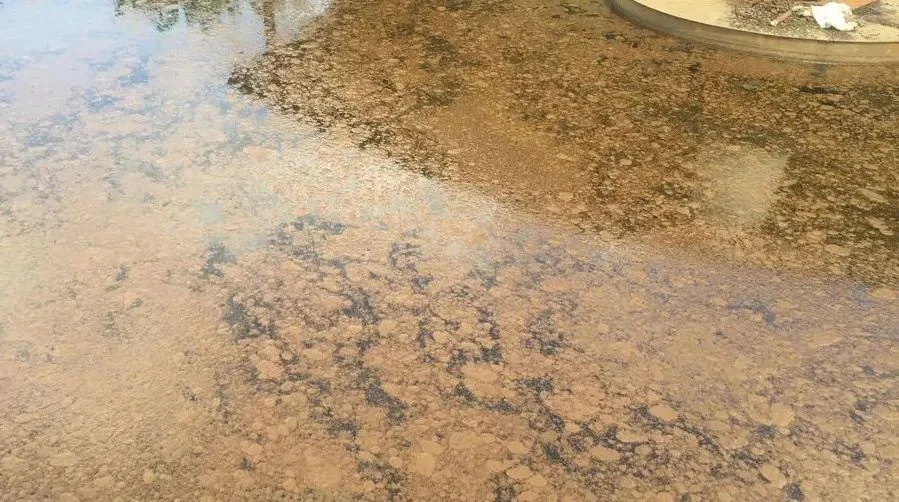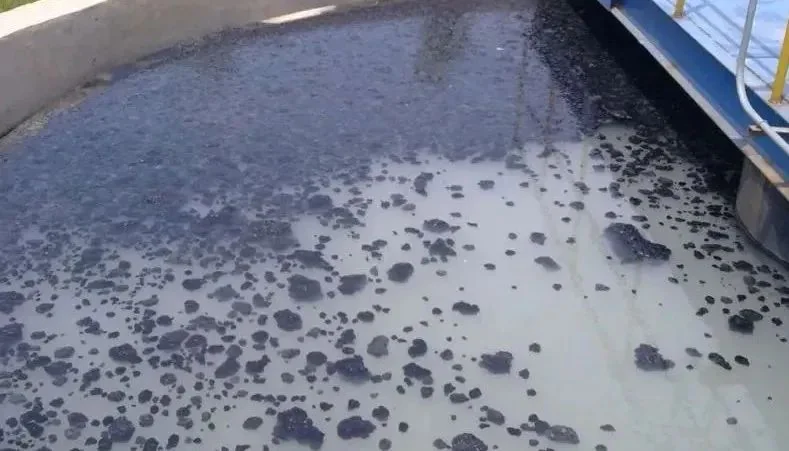In wastewater treatment, floating sludge in the secondary clarifier is a common and serious issue. You may see thick sludge blocks floating on the surface. This is often caused by a denitrification reaction inside the sludge.
This article explains the causes of sludge floating. It also offers clear and useful solutions to fix the problem and improve water quality.
🔍 Why Does Denitrification Sludge Floating Happen?
Floating sludge needs two conditions:
- Nitrate (NO₃⁻) exists in the tank
- The sludge has an anoxic (low oxygen) zone inside
Here are the most common reasons:
- Incomplete Denitrification causes nitrate nitrogen to flow into the secondary sedimentation tank
- Not enough carbon source in the anoxic tank,the denitrification process cannot be completely completed.
- Retention time is too short,and nitrate nitrogen has not been completely converted into nitrogen
- Sludge concentration is low, so denitrifying bacteria are few
- The reflux ratio in the aerobic tank is too small to fully return nitrate nitrogen to the anoxic tank for denitrification
- Improper reflux ratio setting
- External reflux is too high, brings too much dissolved oxygen into the anoxic tank,and inhibit denitrification reaction
- Reflux is too low, nitrate nitrogen cannot go back to remove nitrogen and flow into the secondary sedimentation tank
- Low DO at the End of the Aeration Tank
- If DO is less than 1.5 mg/L, it can cause oxygen shortage in the clarifier
- If nitrate nitrogen is present, it creates gas during denitrification and floats the sludge
- Thick Sludge Layer in the Clarifier
- If sludge is not removed in time, it builds up anaerobic or anoxic zone at the bottom
- Bottom sludge becomes denitrification, gas forms and lifts the sludge
- Equipment or Design Problems
- Broken scrapers or dead space in the tank
- These make oxygen transfer poor and sludge builds up

✅ How to Fix Denitrification Sludge Floating
To solve this problem, try the following:
- Remove Floating Sludge and Improve Coagulation Sedimentation
- When there is a large amount of floating sludge, remove it quickly.
- You can also add PAC (polyaluminum chloride) and PAM (polyacrylamide) to help sludge settle better and improve the efficiency of mud water separation
- Improve Sludge Removal and Control Sludge Age
- Discharge sludge regularly. Do not let it stay too long.
- This keeps the sludge active and avoids thick sludge layers at the bottom.
- Keep DO Stable
- Make sure the DO at the end of the aeration tank stays between 1.5 and 2.0 mg/L. This prevents oxygen shortage in the clarifier.
- Adjust the Return Ratio
- Make sure the internal return is enough. This sends nitrates back to the anoxic tank for full denitrification.
- Also, adjust the carbon-to-nitrogen (C/N) ratio based on the water quality to help the denitrification reaction.

📌 Summary
Floating sludge in the secondary clarifier often happens when key system settings go out of balance. Problems with nitrates, oxygen, carbon source, return ratio, and sludge removal can all lead to this issue.
By carefully adjusting these settings, you can reduce floating sludge and keep the treated water quality stable and safe.
